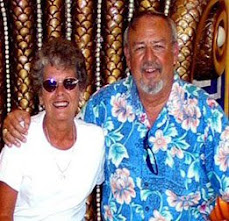Immokalee in the 60's was more labor camp than town. There were a few stores and decent homes but you didn't stray far off the main highway. Filth and squalor dominated the environs.
That's because Immokalee existed for farming--tomato and watermelon, mostly. And the product had to be picked. And that required hundreds of migrant workers--blacks at the time--who were herded up elsewhere by a "Straw Boss" and bused in. Here, they lived under conditions that made Naples McDonald's Quarters ghetto opulent by comparison: three and four families to a motel-room-sized hovel fit for a gulag.
Degradation, despair, and hopelessness are always fertile ground for violence and that was a prime crop in Immokalee, too. Cuttings, beatings, shooting were on each day's agenda. A murder was no more remarkable than the 98 % humidity or a sweaty shirt, sticking to your back, in the 100 degree heat.
Someone had to police this mess, and that fell upon the CCSO. The job required someone with particular talents. Although there were decent family types among the migrants, the roving, no-questions-asked lifestyle--like a carnival-- was a magnet for low-lifes and scumbags on the dodge.
The man selected to keep the lid on this garbage can was John Boom. Called Bad Boy. With good reason. A thick and gruff man, his reputation as someone you "bess not mess wiff" was well deserved. Bad Boy was fair and helpful--in his way--but demanded compliance to his version of law and order and had unique methods to make sure that happened. Today's FBI would've had to set up an Immokalee field office just to handle the civil rights violations he perpetrated.
Ray Barnett remembers being in Immokalee during the MLK riots. Still an NPD cop, he'd been loaned to help quell the violence. He was in the small Immokalee Sub-station, with Bad Boy and Immokalee Investigator Don McCarty, when an elderly black man stumbled in. His face was covered with blood. He went to Bad Boy.
Bad Boy inspected him, found the injury, and took out a pocket knife. Using it as a scalpel, he cut out a .22 cal bullet lodged between the skull and skin, poured alcohol on the wound and sent his patient home.
Ray gave McCarty a quizzical look.
"You ought to see what he can do with a needle and thread," McCarty said.
More to come. . .
That's because Immokalee existed for farming--tomato and watermelon, mostly. And the product had to be picked. And that required hundreds of migrant workers--blacks at the time--who were herded up elsewhere by a "Straw Boss" and bused in. Here, they lived under conditions that made Naples McDonald's Quarters ghetto opulent by comparison: three and four families to a motel-room-sized hovel fit for a gulag.
Degradation, despair, and hopelessness are always fertile ground for violence and that was a prime crop in Immokalee, too. Cuttings, beatings, shooting were on each day's agenda. A murder was no more remarkable than the 98 % humidity or a sweaty shirt, sticking to your back, in the 100 degree heat.
Someone had to police this mess, and that fell upon the CCSO. The job required someone with particular talents. Although there were decent family types among the migrants, the roving, no-questions-asked lifestyle--like a carnival-- was a magnet for low-lifes and scumbags on the dodge.
The man selected to keep the lid on this garbage can was John Boom. Called Bad Boy. With good reason. A thick and gruff man, his reputation as someone you "bess not mess wiff" was well deserved. Bad Boy was fair and helpful--in his way--but demanded compliance to his version of law and order and had unique methods to make sure that happened. Today's FBI would've had to set up an Immokalee field office just to handle the civil rights violations he perpetrated.
Ray Barnett remembers being in Immokalee during the MLK riots. Still an NPD cop, he'd been loaned to help quell the violence. He was in the small Immokalee Sub-station, with Bad Boy and Immokalee Investigator Don McCarty, when an elderly black man stumbled in. His face was covered with blood. He went to Bad Boy.
Bad Boy inspected him, found the injury, and took out a pocket knife. Using it as a scalpel, he cut out a .22 cal bullet lodged between the skull and skin, poured alcohol on the wound and sent his patient home.
Ray gave McCarty a quizzical look.
"You ought to see what he can do with a needle and thread," McCarty said.
More to come. . .







No comments:
Post a Comment